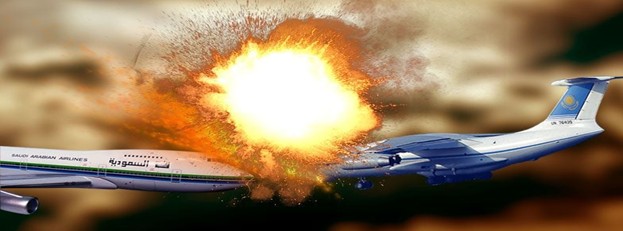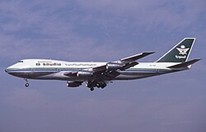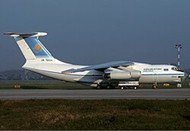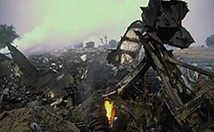
On the evening of 12 November 1996, India witnessed one of the most devastating tragedies in aviation history. In the skies over the small town of Charkhi Dadri in Haryana, two massive passenger aircraft collided mid-air, killing 349 people instantly. This catastrophic accident remains India’s deadliest air disaster and the world’s worst mid-air collision in terms of fatalities.
The Aircraft Involved
Two wide-bodied jets were part of the collision:
- Saudi Arabian Airlines Flight 763
- Aircraft: Boeing 747-168B
- Origin: Indira Gandhi International Airport, New Delhi
- Destination: King Abdulaziz International Airport, Jeddah
- Passengers and crew: 312 people (majority were Indian workers heading to Saudi Arabia for employment)
- Kazakhstan Airlines Flight 1907
- Aircraft: Ilyushin Il-76TD, a Soviet-built cargo-cum-passenger jet
- Origin: Chimkent, Kazakhstan
- Destination: Indira Gandhi International Airport, New Delhi
- Passengers and crew: 37 people
Both flights had taken off or were preparing to land at Delhi airport when fate brought them on a fatal collision course.
The Sequence of Events
On that evening, Saudi Flight 763 had departed from New Delhi at around 6:30 PM, climbing to its assigned altitude of 14,000 feet as part of its journey westward toward Saudi Arabia.
At the same time, Kazakhstan Airlines Flight 1907 was approaching Delhi, descending from the west. Air traffic control (ATC) had instructed the Kazakh aircraft to descend to 15,000 feet and maintain altitude until further instructions.
In theory, there should have been a safe 1,000-foot vertical separation between the two planes. But in practice, disaster was about to unfold.
The Fatal Mistake
The investigation later revealed that the Kazakh crew misinterpreted instructions and descended below their assigned altitude. Instead of staying at 15,000 feet, they began to drop toward 14,500 feet, and eventually further. This error brought them directly into the path of the climbing Saudi jet.
The two aircraft converged head-on in the dark sky at about 14,000 feet, just minutes after take-off and descent instructions.
At approximately 6:40 PM, over the village of Charkhi Dadri, the nose of the Kazakh Ilyushin struck the left wing of the Saudi Boeing 747.
The Collision
Eyewitnesses in Charkhi Dadri recalled hearing a thunderous boom and seeing fiery wreckage raining from the night sky. Some described it as if the heavens had exploded.
The Kazakhstan aircraft, smaller in size, was torn apart instantly by the impact. The Saudi jet, though larger and sturdier, lost control and broke up in mid-air. Both aircraft plunged into fields near the village, leaving a trail of burning debris.
All 349 people aboard both aircraft were killed on impact or in the crash that followed.
Rescue and Recovery
Local villagers rushed to the crash sites, but what they encountered was horrifying. Both crash zones were engulfed in flames, and wreckage was scattered over miles of farmland. Rescue was impossible—there were no survivors.
The wreckage from the Kazakh aircraft was concentrated, while the Saudi Boeing 747 left a larger debris field. Burnt luggage, personal belongings, and body parts littered the area. It took several days for recovery teams to collect all remains and evidence.
Investigation Findings
The Directorate General of Civil Aviation (DGCA) of India, along with international aviation experts, investigated the disaster. Their report highlighted several critical issues:
- Pilot Miscommunication
- The Kazakh crew’s limited proficiency in English played a major role. They misunderstood Delhi ATC’s instructions and descended below 15,000 feet.
- Inadequate Cockpit Communication
- The Kazakhstan Airlines cockpit reportedly lacked clear communication protocols between pilot and co-pilot.
- Lack of Collision-Avoidance Technology
- At that time, the planes were not equipped with modern Traffic Collision Avoidance Systems (TCAS), which alert pilots of approaching aircraft and automatically suggest avoidance maneuvers.
- Overcrowded Airspace
- Delhi’s airspace was congested, and procedural air traffic control (instead of radar-based real-time monitoring) increased risks.
The final verdict placed primary blame on the Kazakhstan Airlines crew for descending below their cleared altitude.
Aftermath and Changes in Aviation
The Charkhi Dadri disaster shocked the world and forced major reforms in civil aviation, particularly in India.
- Mandatory TCAS: Following the accident, the Indian government made it compulsory for all commercial aircraft flying in its airspace to be fitted with TCAS. This move soon became an international aviation standard.
- Improved ATC Procedures: Delhi and other major airports upgraded to radar-based monitoring systems, allowing more precise tracking of flights.
- Language Proficiency Rules: The International Civil Aviation Organization (ICAO) introduced stricter English language proficiency requirements for pilots and air traffic controllers.
These safety measures, born out of tragedy, have since prevented countless potential mid-air collisions worldwide.
Human Toll and Legacy
The victims of Saudi Flight 763 were mostly Indian migrant workers traveling to Saudi Arabia, along with a few Saudi nationals. The Kazakhstan flight carried a smaller number of passengers, but included senior crew members and aviation workers.
The grief was immense. Entire families were wiped out, and villages across India mourned their sons and fathers who never returned from the journey. Charkhi Dadri itself, though not home to the victims, became permanently associated with the tragedy.
A memorial was later built near the crash site to honor those who perished.
Conclusion
The Charkhi Dadri mid-air collision was not just an aviation accident—it was a turning point in global air safety. The disaster underscored the need for technology-driven safeguards, better communication, and stricter pilot training.
Though nothing could bring back the 349 lives lost in those fateful minutes over Haryana, the lessons learned have made skies safer for millions of passengers worldwide.
It remains a solemn reminder that in aviation, even the smallest error can lead to catastrophic consequences—and that safety reforms often come at the highest cost of all: human lives.



THE CHARKHI DADARI MID AIR COLLISSION COLLIDED AT 14000 FEET
